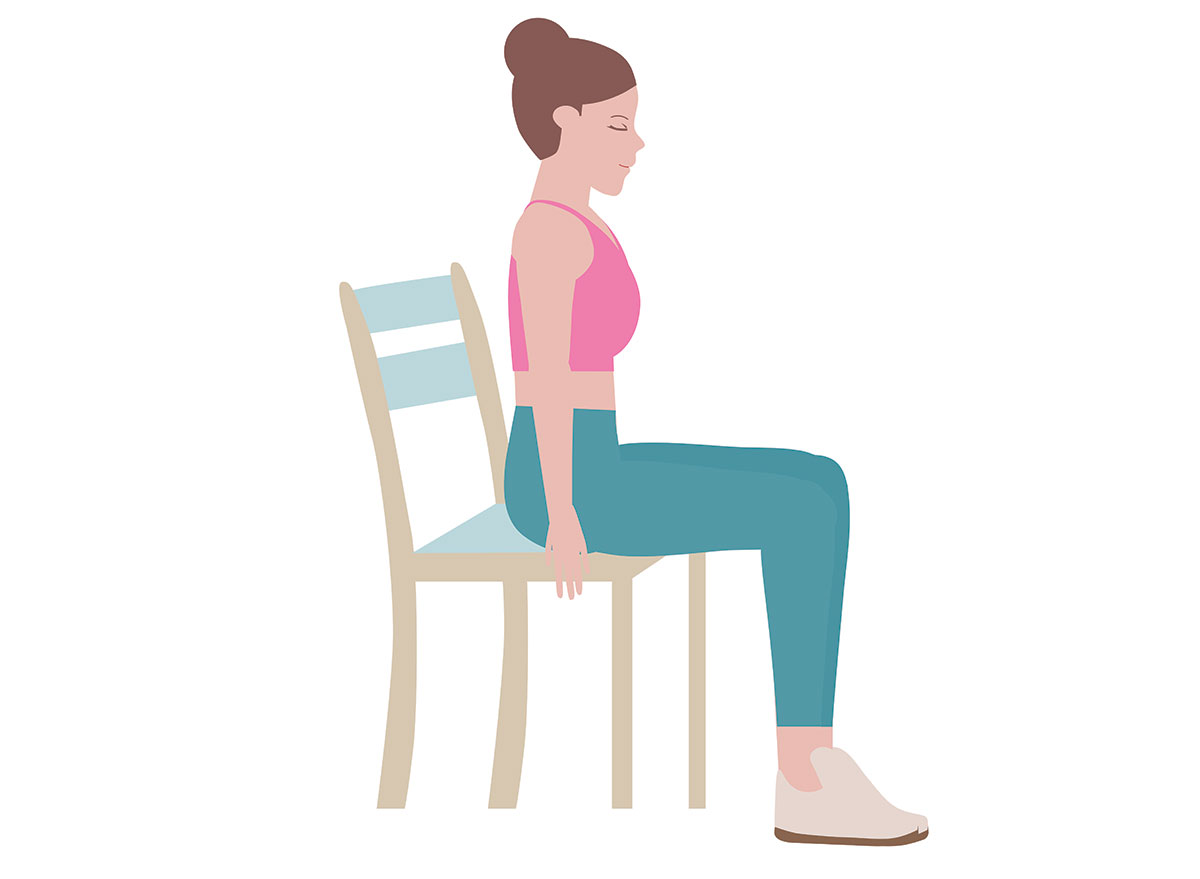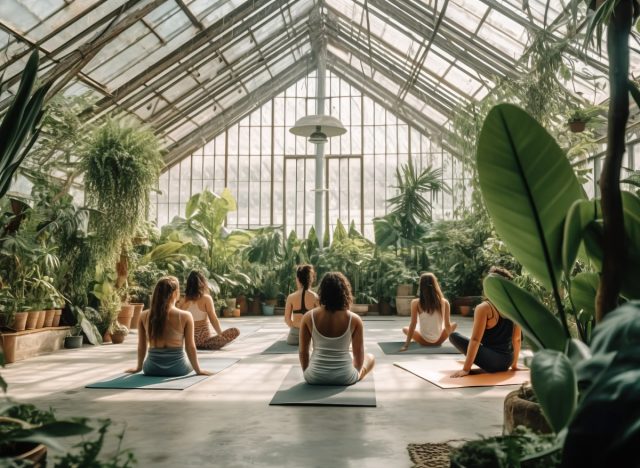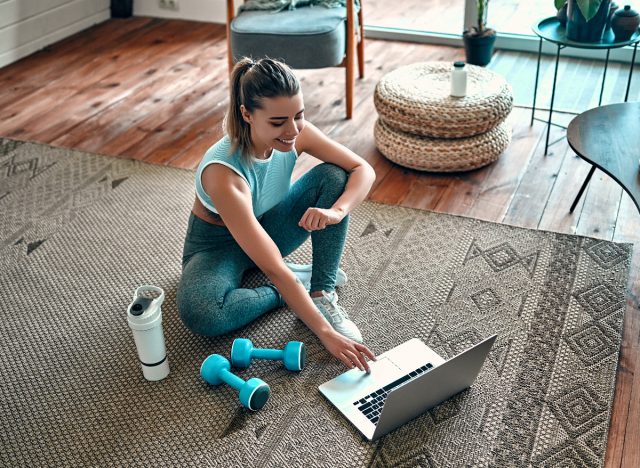The Secret Way Sitting Can Extend Your Life, Say Experts

Health experts agree that sitting too much every day is far from good for your body in the long run. When you sit too much every day—and rob yourself of many of the basic movements that can bolster your health and your body—you’ll find that your brain isn’t as sharp, your mood is worse, you develop tight muscles and poor posture, and, if you’re a woman, it may in fact affect your ability to conceive a child. Also, you’ll be essentially shaving years off your life.
But we’re human beings, after all, and we have to take a seat every now and then throughout the day. According to the leading health experts who study the world’s oldest living people—and a previous study published in the European Journal of Preventive Cardiology—there’s a certain type of sitting that is actually associated with a longer life. Curious to know what it is? Read on for the secret way that altering your sitting habits for the better can actually make you a healthier person. And for some stellar exercise tips for sitting less every day, check out The 15-Second Exercise Trick That Can Change Your Life.
Meet the “Blue Zones”

The world’s “Blue Zones” have enthralled scientists and longevity experts ever since National Geographic first introduced the term in 2005. For the record, they’re defined as small, outlier regions across the global population where a greater number of inhabitants live much longer-than-usual lifespans.
The founder of the term “Blue Zones” is Dan Buettner, a researcher and journalist who has made his career out of studying the world’s oldest people. In a new interview with Well+Good, Buettner revealed some of his firsthand observations about how the oldest living people sit. And for more great ways to live longer, see here for The Single Most Effective Way to Work Out Every Day, According to Psychologists.
Consider Ditching Your Chairs for the Floor

“The longest-lived women in the history of the world lived in Okinawa, and I know from personal experience that they sat on the floor,” he explained to Well+Good. “I spent two days with a 103-year-old woman and saw her get up and down from the floor 30 or 40 times, so that’s like 30 or 40 squats done daily.” For some great fitness tips, don’t miss these Secret Tricks for Walking Better Starting Now, Say Experts.
Why It’s Backed by Science

Simply put: When you sit on the floor more instead of a chair, you’re forcing your body to work harder and fight gravity more. You’ll also be improving your flexibility and muscle function, and, since it’s less comfortable, you’ll find that you won’t sit for as long.
The aforementioned study in the European Journal of Preventative Cardiology focused on one single fitness test that can supposedly test your longevity. It’s known as the “sitting rising test.” Here’s how it works: Sit on the floor with your legs crisscrossed and don’t brace yourself with your hands, legs, knees, or arms. If you can stand up without any help from any of your limbs, you’ve got a perfect score. The more help you need from other parts of your body, the worse you perform.
According to the study, which drew on data from more than 2,000 participants, people who perform the worst at this test are upwards of six times more likely to die earlier than those who can do it successfully.
“It is well known that aerobic fitness is strongly related to survival, but our study also shows that maintaining high levels of body flexibility, muscle strength, power-to-body weight ratio and co-ordination are not only good for performing daily activities, but have a favorable influence on life expectancy,” Claudio Gil Araújo, MD, Ph.D., explained in the study’s official release.
What It Means for You

Sitting on the floor more and exerting more effort to rise to a standing position—several times per day—will indeed work your core and help your balance. In terms of mobility, these are crucial movements. “Another huge benefit is when you are able to sit down and stand back up from the floor with relative ease, it’s a wonderful sign of overall structural, skeletal health and muscular balance and alignment,” Lauren Roxburgh, a body alignment specialist, explained to Well+Good.
Just remember: Whether you’re sitting on the floor on in the chair, the same rules for proper posture abide. You need to avoid slouching, and sit tall with your neck extended out of your spine. Ultimately, Rosburgh explained, “sitting on the floor and periodically doing long, deep squats are a great way to boost circulation, blood flow, and energy, increase flexibility and range of motion, create space and build some deeper awareness of your body while helping you feel grounded.” If sitting on the floor is too uncomfortable for you, then make it a point to add in some more squats throughout the day. And for more reasons to be more active every day, see here for What Happens to Your Body When You Walk More, Says Science.